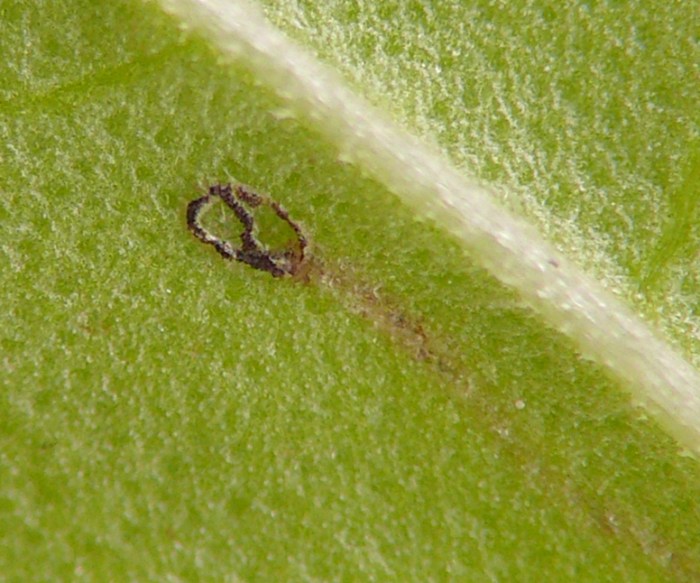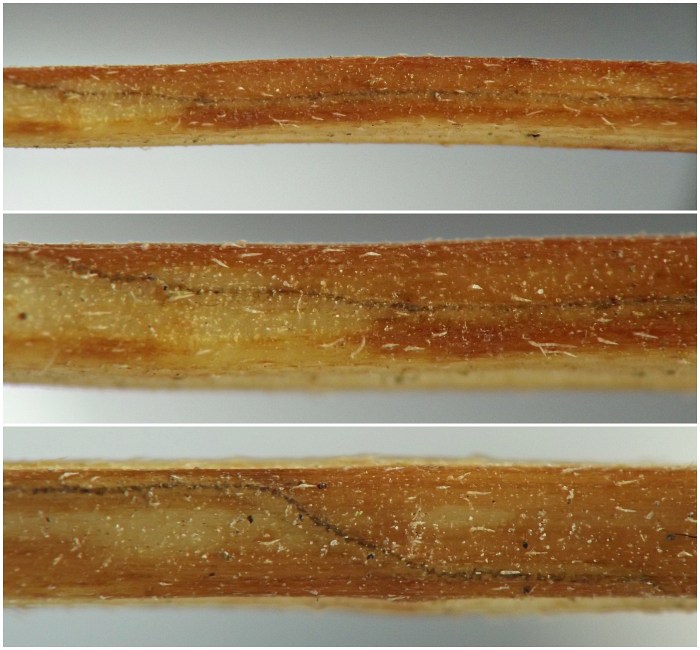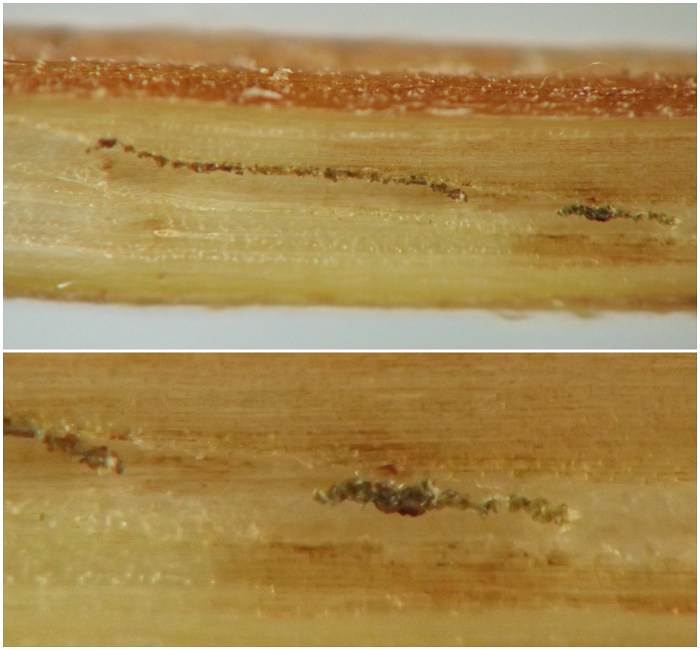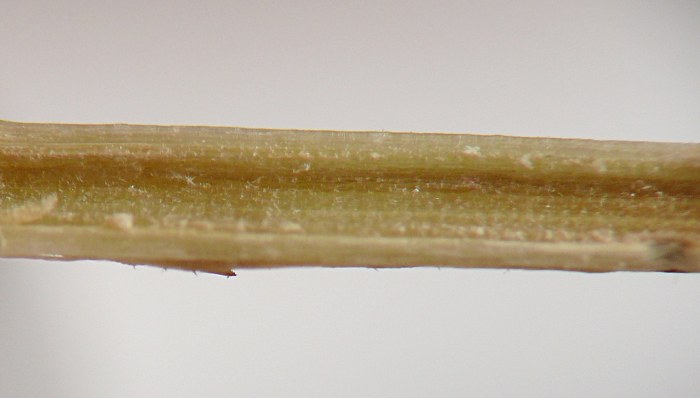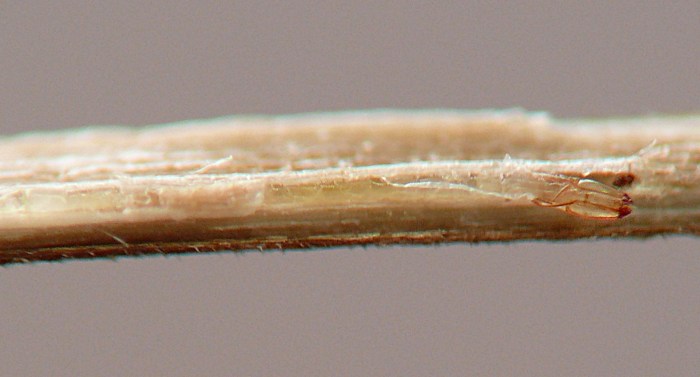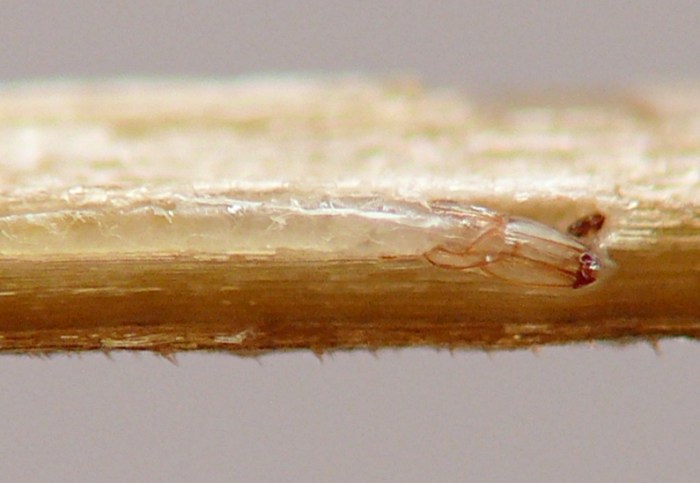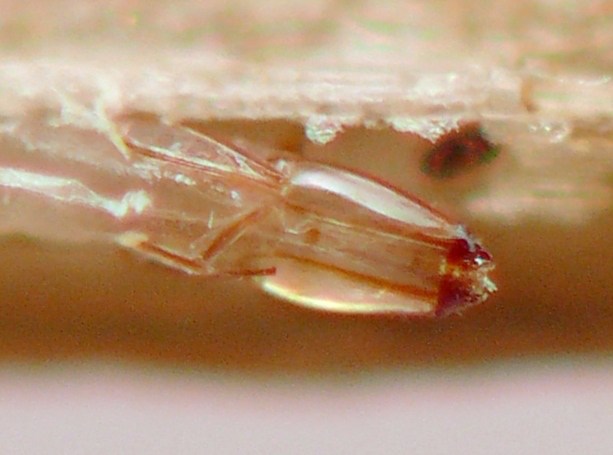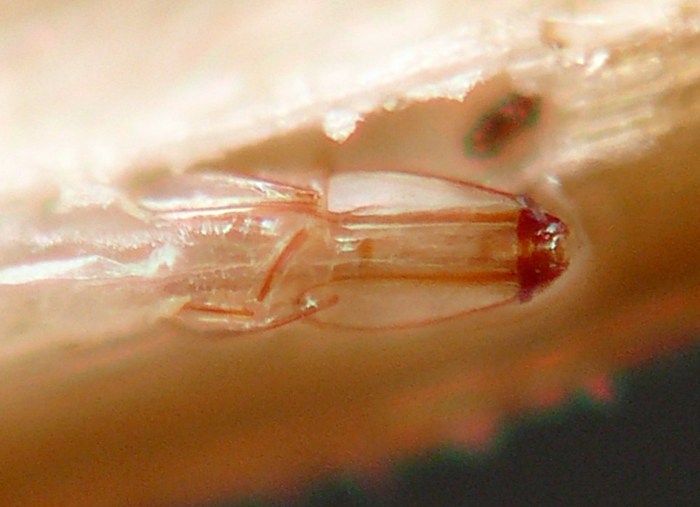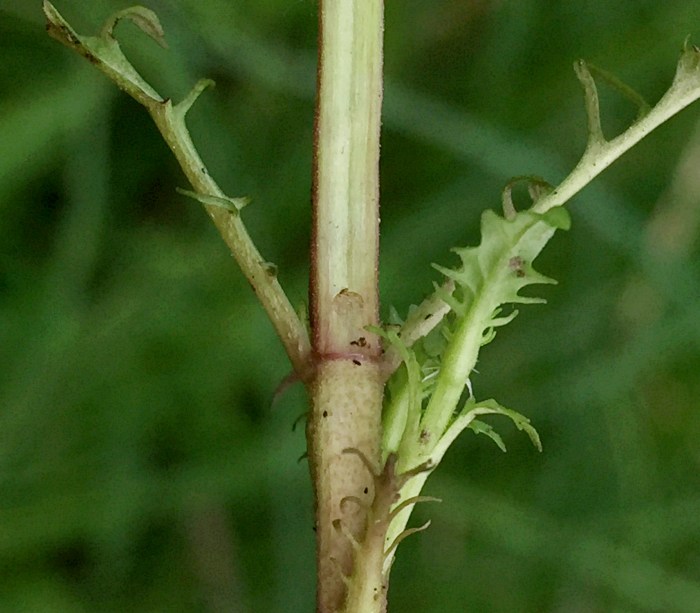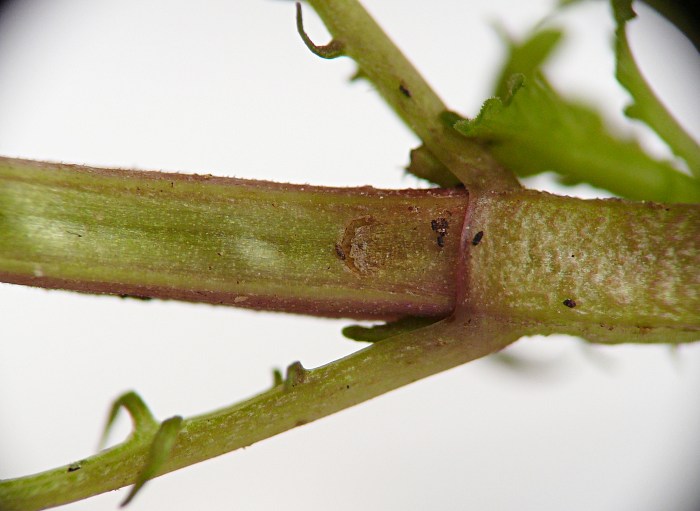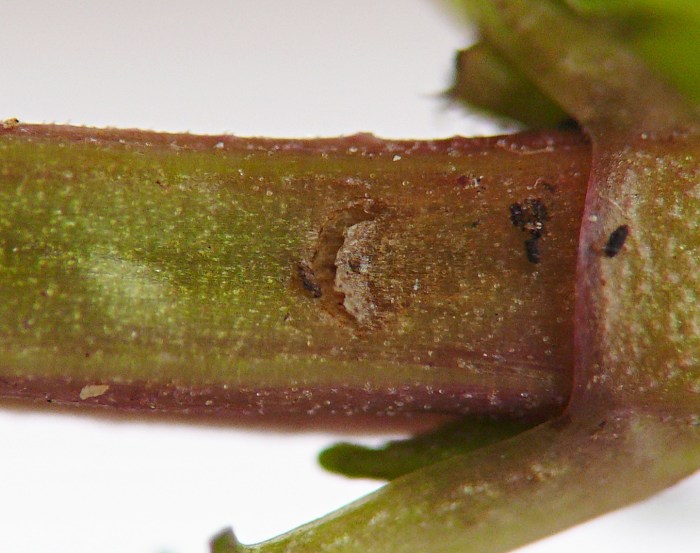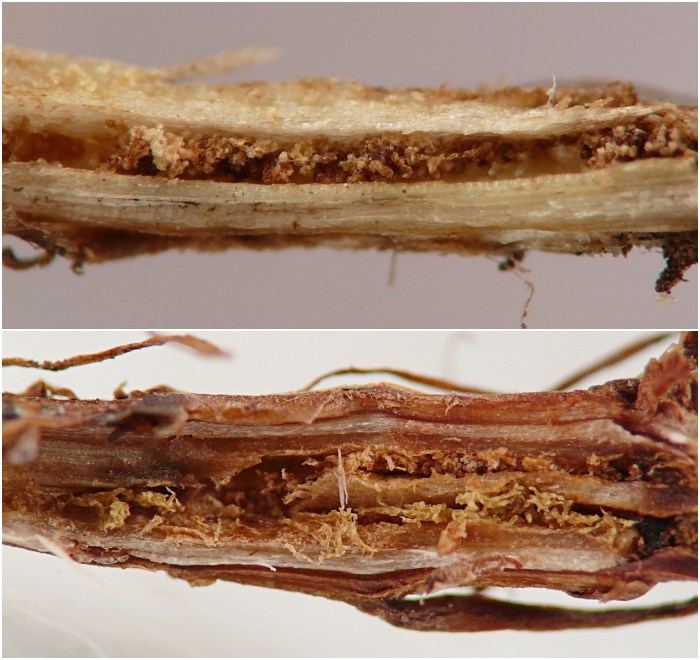Stem miner/borer (Lepidoptera: Opostegidae) in Lycopus [0322+0637]
| Order | Lepidoptera |
|---|---|
| Family | Opostegidae[T] |
| Lower taxon | cf. Pseudopostega |
| No. spp. involved | One confirmed |
| Feeding mode | Leaf miner, stem miner/borer, probably rhizome miner/borer |
| Host plant | Lycopus spp. (Lamiaceae), including L. americanus and L. uniflorus |
In the current study, mines in leaves and stems of L. americanus and in stems of L. uniflorus were initially found in September and October, 2021-2023. Following Eiseman (2022), and given that Pseudopostega auritella has been confirmed to use Lycopus as a host in Europe (van Nieukerken 1989, 2024), these mines were believed to be the work of an opostegid moth in the genus Pseudopostega, but the mines were empty when found.
In 2024, colleague T. Feldman located mines in North Carolina in mid-July (Feldman 2024). This helped prompt a renewed search in the Upper Midwest as part of the current study, and in late July, JvdL discovered and photographed a young larva in L. uniflorus. It was located in an interior mine in the pithy tissue lining the inner wall of the lower stem; this part of the mine was not externally visible, but higher on the plant, the mine strayed into shallower tissues and could be seen from the outside.
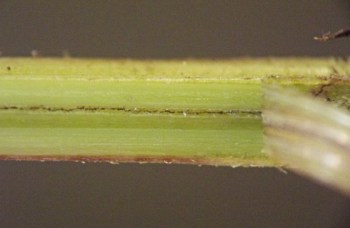
Also in the current study during July 2024, the oviposition sites were located on three affected plants of L. americanus and one affected plant of L. uniflorus. In all four examples the egg had been laid on the underside of a leaf on the middle to lower part of the plant. In every case, upon hatching, the larva had formed a short linear mine in the leaf blade before entering the leaf midrib or petiole. In one instance some of the eggshell remained; in each of the other three instances the eggshell was mostly gone, but there was a linear accumulation of black material reminiscent of frass. The material appeared to trace the former outline of the eggshell and then lead into the mine. Ellis (2001-2024) reports that in freshly hatched Stigmella (Nepticulidae), "the emerging larvae, at the point of begining its mine, vacates its gut into the empty egg shell." If the same procedure is followed by larvae of the Lycopus Pseudopostega, that would explain the presence of the black material leading around the eggshell and then into the mine.
Nearly all observed stem mines on both L. americanus and L. uniflorus appeared to lead down to ground level. All the way to ground level, the stem mines also appeared too narrow to have been produced by mature opostegid larvae. Thus, the evidence suggested that, as with some other opostegids documented in the current study, larvae of the Lycopus feeder may spend time feeding in the belowground parts of the plant.
Tunnels were observed in an overwintered L. americanus rhizome collected in late May, but the culprit had already abandoned the plant material, and so it could not be confirmed that the damage was the work of an opostegid. It is not known if larvae typically finish feeding in the belowground parts, or move up into new shoots in spring or summer as is documented in this study for opostegids in Monarda, Blephilia, and Mentha.
Update, 2024: colleague C. Eiseman shared the following account with JvdL (pers. comm., 27 July 2024): "I found several [opostegid] mines yesterday [26 July 2024] on ~20 cm tall L. uniflorus plants in more or less full sun, in a shrub swamp in the southwest corner of Massachusetts. I collected three mined plants and just finished examining them. In each case the mine is 2-4 cm from the top of the plant, and each eggshell is on the underside of the leaf as John observed, at (or very close to) the leaf margin. One mine has exited the leaf and in transmitted light is visible going up the stem; it will have to turn around soon since there is only 2 cm of stem above the mined leaf. The other two larvae are still in the leaves--not clearly visible in transmitted light, but it is clear that the mine ends inside the leaf (even though one of them meandered to the very base of the leaf blade at one point)." Also, E. van Nieukerken examined the photos of the opostegid eggshells in this document and commented that "[they] look very much like those of nepticulids, as could be expected" due to the affinity of the two families (pers. comm., 20 July 2024).
Update, 2025: On June 10th, after visually examining the exteriors of approximately 60-75 L. americanus shoots, JvdL found three that contained subtle raised areas in the lower stems, a result of opostegid internal feeding. Two of these shoots also contained semicircular exit slits, indicating the larvae had already abandoned them. One of the slits appeared very fresh, as if it had been made within the last 1 to 3 days, while the other slit appeared significantly older, made perhaps a week ago or even further in the past. Larvae had tunneled somewhat shallowly in the stems, accounting for the externally visible raised areas. They had also clearly fed in deeper tissues; in the two stems bearing exit slits, the lowermost 20-40mm of each stem contained a tunnel in the center of the stem interior, with a short passageway leading from this tunnel out through the exit slit. The larva's tunnel system was also visible in the cross section of the bottom end of the shoot (the location where JvdL had cut the shoot from the rhizome), suggesting the larva had migrated from the rhizome into the shoot.
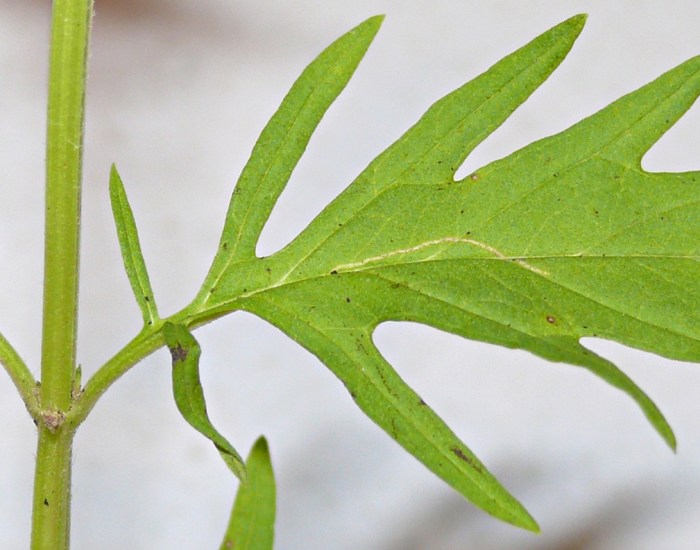
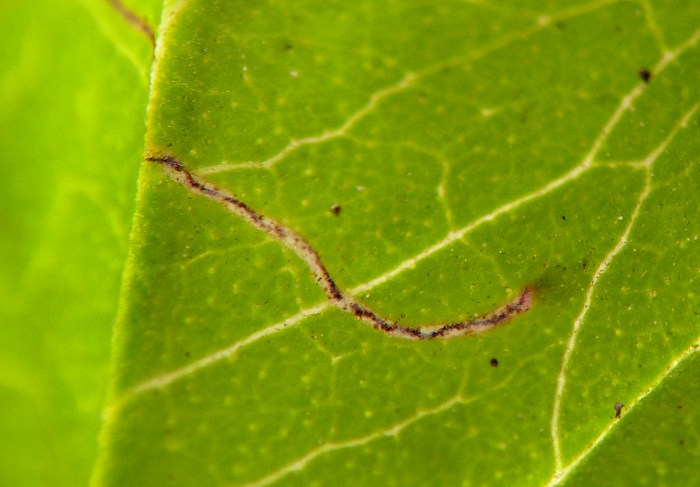
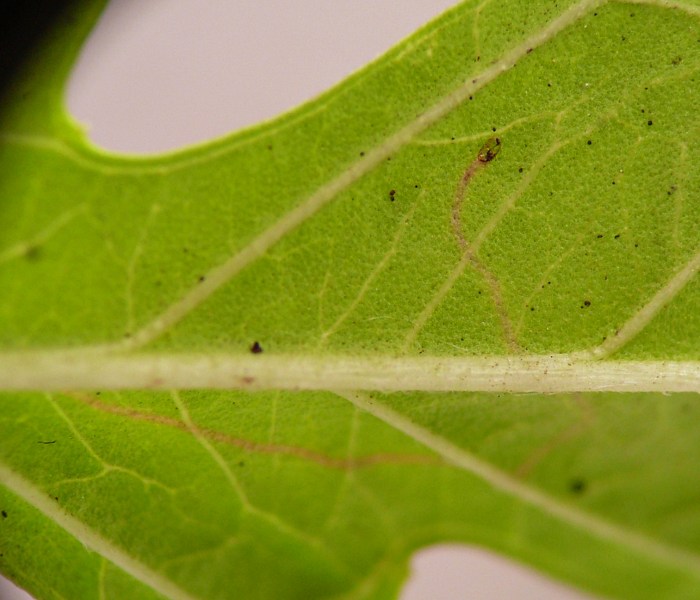
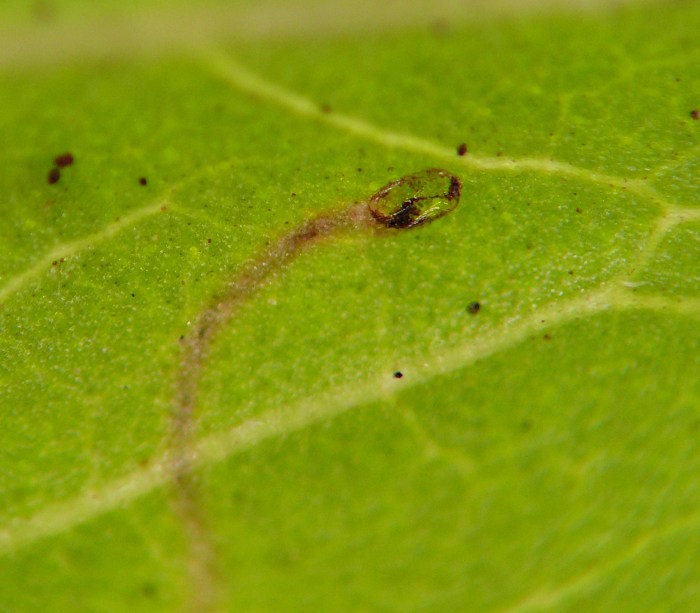
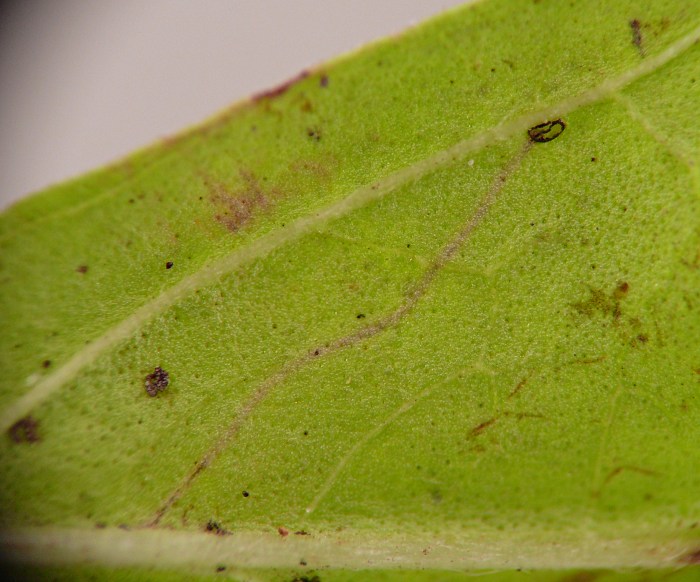
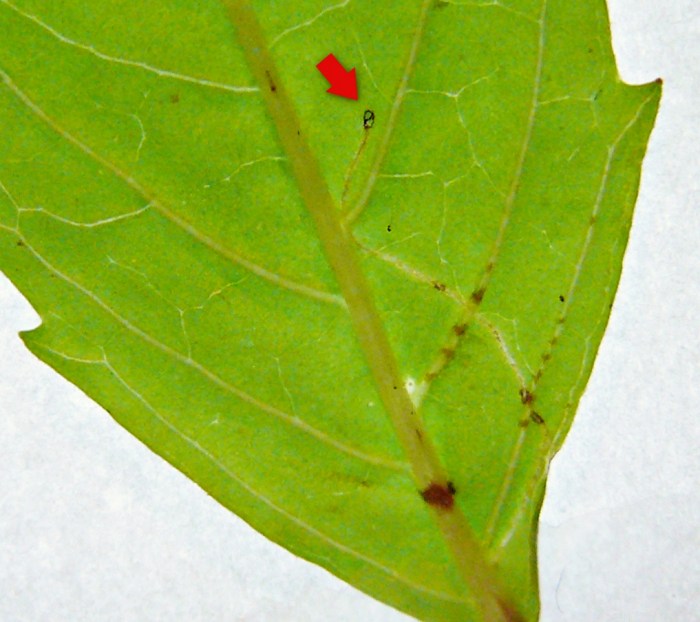
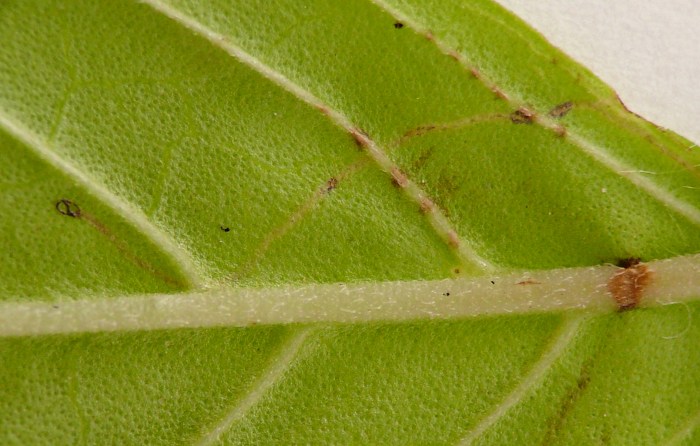
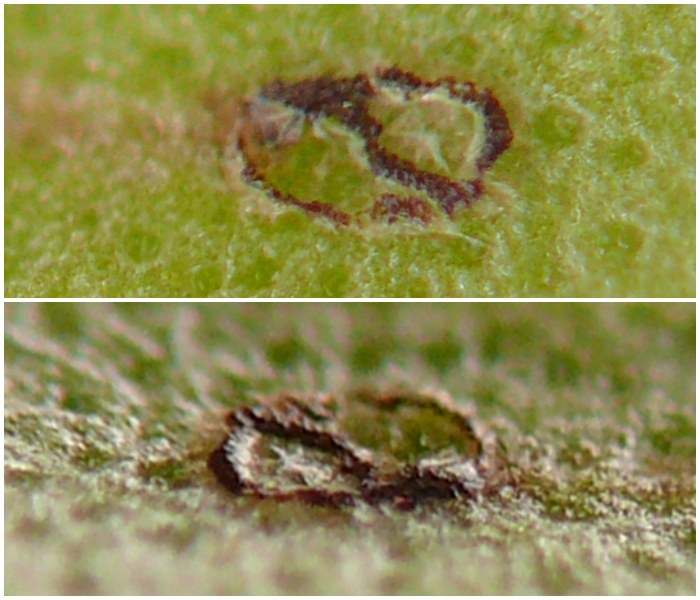



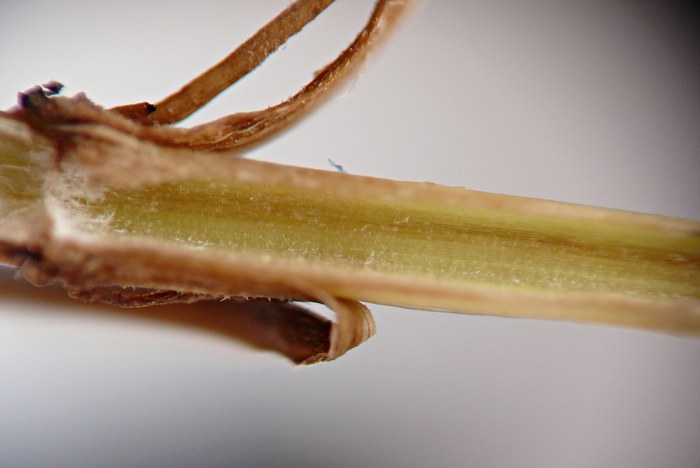
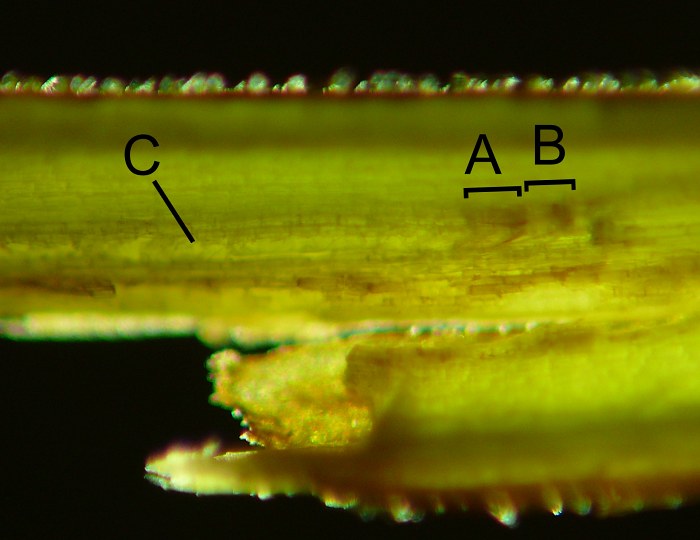
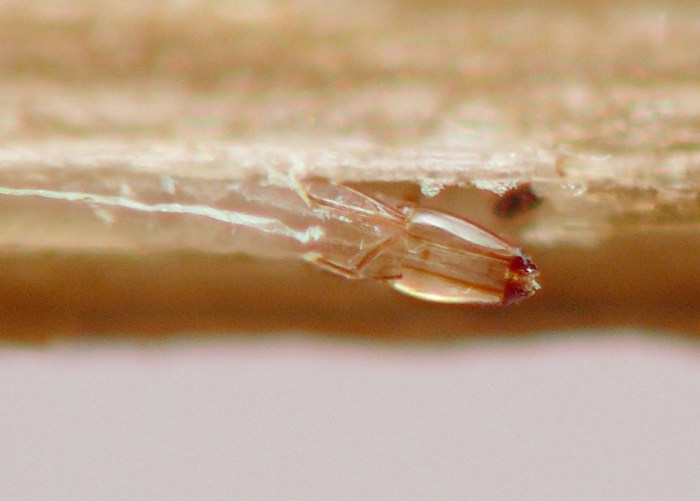
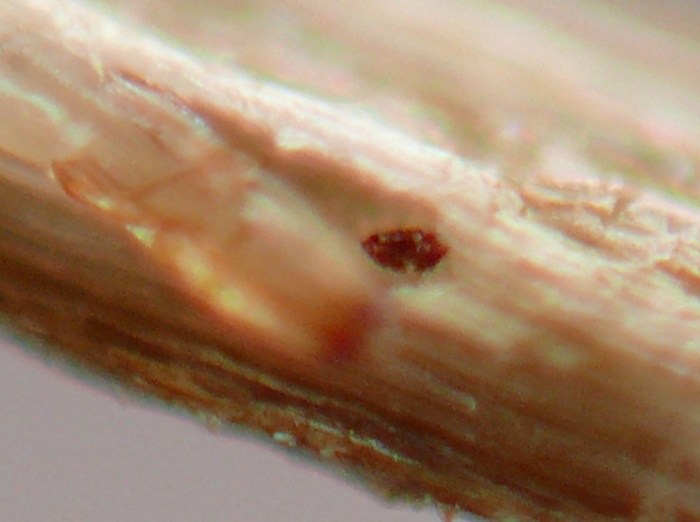
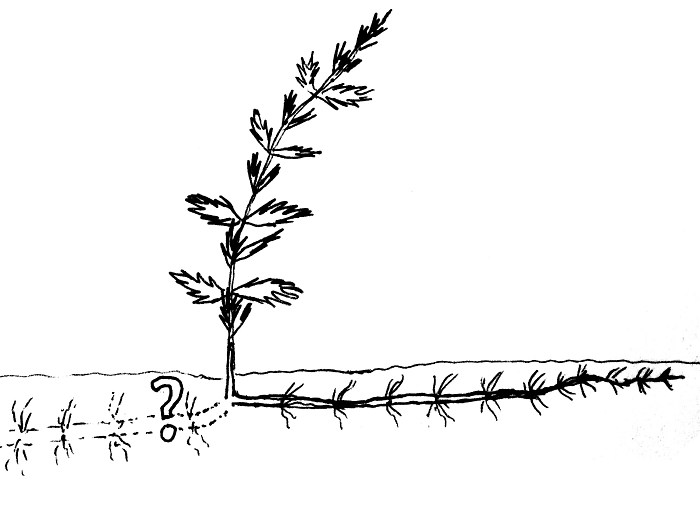

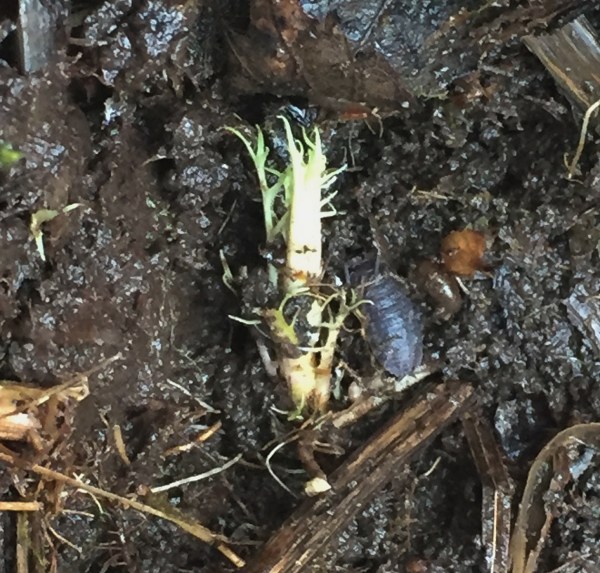

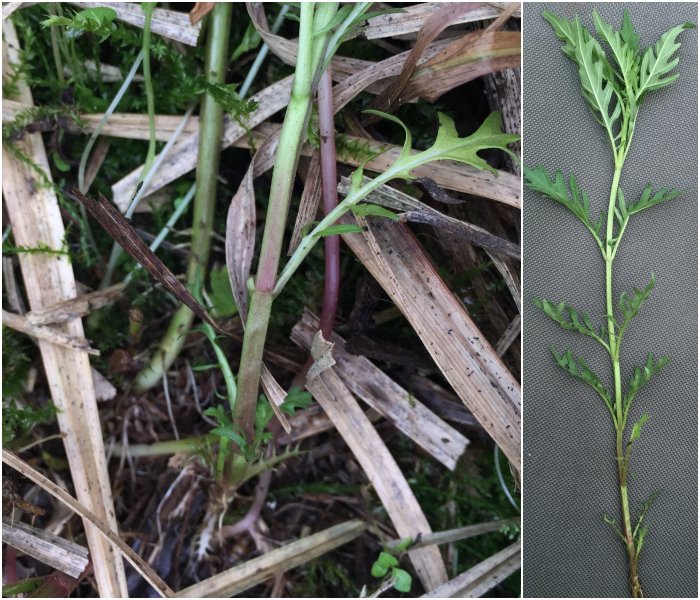


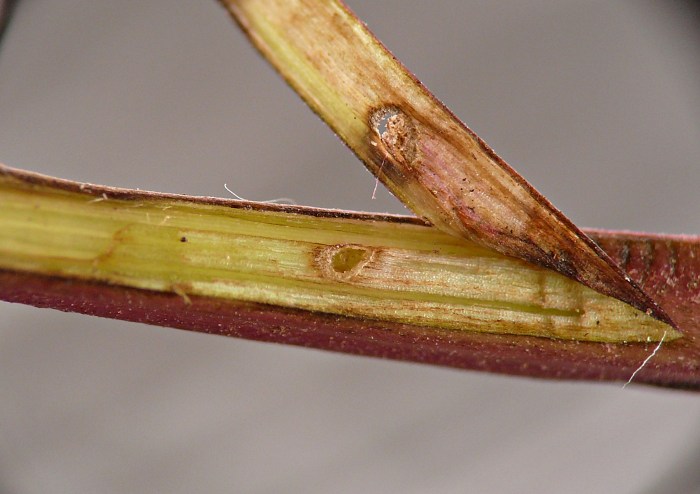
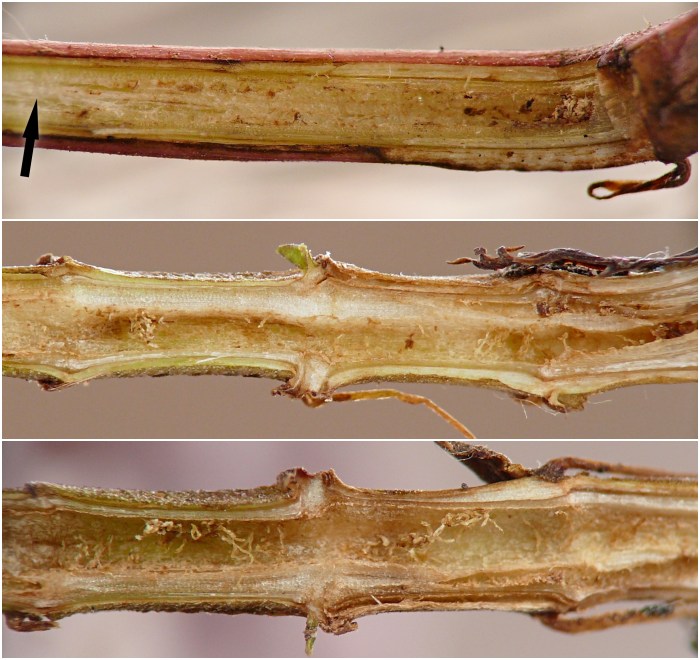
Specimen data for images
Coll. 09/13/21, photos same day (01-05); illustrations created 06/21/24 (21-22); coll. 10/20/23, photos same day (23-26); field photo taken on 11/03/23 (27); coll. 07/18/24, photos on 07/19/24 (28-33, 38); coll. 07/26/24, photos on 07/26/24-07/27/24 (34-37, 39-48); field photo taken on 06/10/25 (49); coll. 06/10/25, photos same day (50-59).
All specimens above from the Upper Midwest, USA. A landowner granted permission to judiciously sample a small number of rhizomes in order to attempt to learn about this moth's life history.
Acknowledgments
Thank you to C. Eiseman and E. van Nieukerken for contributing the comments quoted in the text, and to T. Feldman for sharing his observation of early mines in mid-July which helped lead to some of the summertime observations by JvdL shown on this page.
References
Eiseman, C.S. 2022. Leafminers of North America, 2nd edition. Self-published e-book. Available from the author at https://charleyeiseman.com/leafminers/.
Ellis, W.N. 2001-2024. Egg. In Plant parasites of Europe: leafminers, galls and fungi. Retrieved July 27, 2024 from https://bladmineerders.nl/introduction/mines/life-stages/egg/.
Feldman, T.S. 2024. Contributor post at iNaturalist.org. Retrieved July 27, 2024 from https://www.inaturalist.org/observations/230219591.
Nieukerken, E.J. van. 1989. Opostegidae. Pages 357-372 in Johansson, R., et al. The Nepticulidae and Opostegidae (Lepidoptera) of North West Europe. Fauna entomologica scandinavica 23:1-739.
Nieukerken, E.J. van. 2024. Biology of Pseudopostega species in Europe (Lepidoptera: Opostegidae). In Van der Linden, J. 2024. Some endophagous insects from the Upper Midwest, USA. Self-published Web reference. Retrieved July 27, 2024 from https://insect-pages.github.io.
Page created 06/20/24. Last update: 06/13/25





